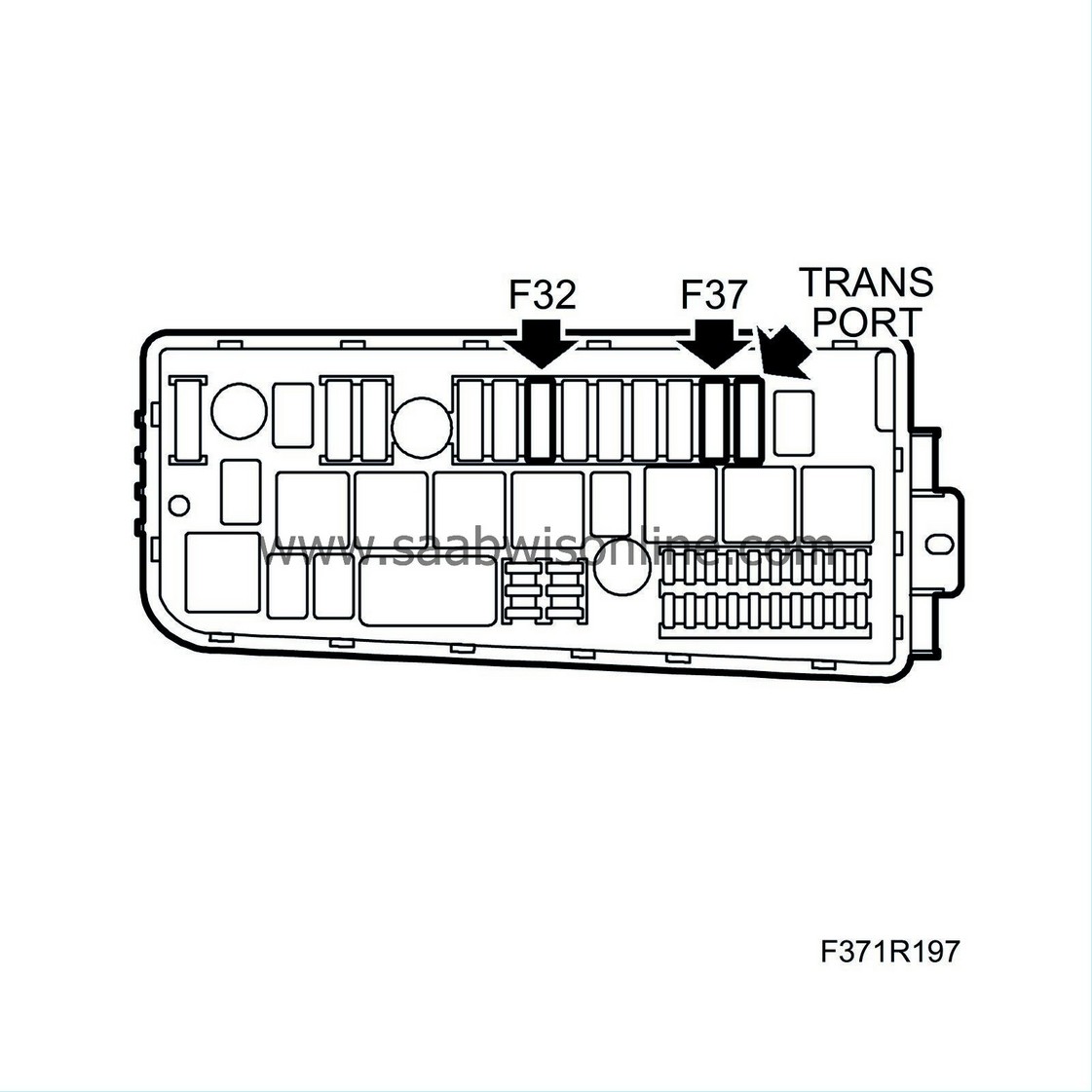Battery check during service
|
|
Battery check during service
|
This instruction should be followed when checking battery condition (not just during service).
|
1.
|
Remove the battery cover.
|
|
2.
|
Check the battery electrolyte level. The battery cannot be topped up with electrolyte. It must be replaced if the level is too low.
|
Note
|
|
The electrolyte level is checked through an indicator window on the battery that appears white if the level is too low. If the electrolyte level is sufficiently high, the indicator window appears black.
|
|
|
3.
|
Remove the cover from the Underhood Electrical Centre (UEC).
|
|
5.
|
Switch off all consumers and check that the text "Transport fuse removed" appears in the main instrument unit. Then remove the ignition key from the ignition switch.
|
Note
|
|
Certain diagnostic trouble codes can be generated if the battery is tested while the key is in the ignition switch.
|
|
|
6.
|
Remove fuse 32. Wait at least 20 seconds before connecting the battery analyser.
|
|
7.
|
Connect the battery analyser with the red clamp to the positive terminal (+) and the black clamp to chassis ground. Incorrect polarity will not damage the analyser. Make sure that the cable clamps make as good contact as possible.
Follow the instructions on the analyser display.
|
Note
|
|
Once both clamps are connected, the analyser starts automatically. For a detailed description of how to use the analyser, refer to the analyser's instruction manual.
|
|
|
8.
|
Under "SELECT TEST", you choose whether the battery is connected to the car's electrical system ("IN VEHICLE") or not ("OUTSIDE VEHICLE"). Select ("IN VEHICLE") since the battery is connected to the car.
|
|
9.
|
Under "BATTERY TYPE", select whether the battery is factory-fitted ("SAAB BATTERY") or a replacement battery from another manufacturer ("NON-SAAB").
|
|
10.
|
Confirm "SELECT TEST BY SAE (A)" if the battery's cold starting current is specified as per CCA (SAE or EN) standard. For batteries specified as per DIN standard, select and confirm "SELECT TEST BY DIN (A)".
|
Important
|
|
CCA (SAE or EN) always applies to Saab factory-fitted batteries.
|
|
|
|
Note
|
|
The DIN standard can be selected when the analyser is used to test replacement batteries that are not specified according to SAE or EN.
|
|
|
11.
|
Enter the cold starting current (CCA) for the battery in question.
For Saab factory-fitted batteries, this text is found in capital letters on a label affixed to the top of the battery.
60 Ah = 580 CCA
70 Ah = 700 CCA
85 Ah = 750 CCA
After selecting and confirming the value, battery measurement starts automatically.
Under certain voltage and conductance conditions, the analyser will require information on whether the test is being performed before or after the battery has been charged in order to assess it correctly.
Select "BEFORE CHARGE" or "AFTER CHARGE".
Follow the action suggested by the battery analyser:
|
|
|
•
|
Good battery = Battery is good. No action.
|
|
|
•
|
Good, recharge battery = Battery must be charged, but not replaced.
|
|
|
•
|
Replace battery = Battery must be replaced.
|
|
12.
|
If the analyser indicates the battery needs to be replaced within the warranty period, note the test code. This test code should be included on the warranty claim (more information is available under Warranty policy).
|
Important
|
|
Also check the replacement battery with the battery analyser before fitting it in the car. If the cold cranking amperage of the replacement battery is not specified according to SAE or EN standard, it can be measured according to DIN standard.
|
|
|
|
|
13.
|
Fit fuse 32 and fuse 37 (moved from TRANSPORT to position 37). Put the car in customer mode - see
Transport mode/customer mode of car's electrical system
.
|
Important
|
|
After fuse 32 has been removed, the ignition key must be inserted and removed. The key can then be inserted and turned to "Ignition on".
|
|
|

|
|
14.
|
Fit the cover of the Underhood Electrical Centre (UEC).
|
|
15.
|
Fit the battery cover.
|



